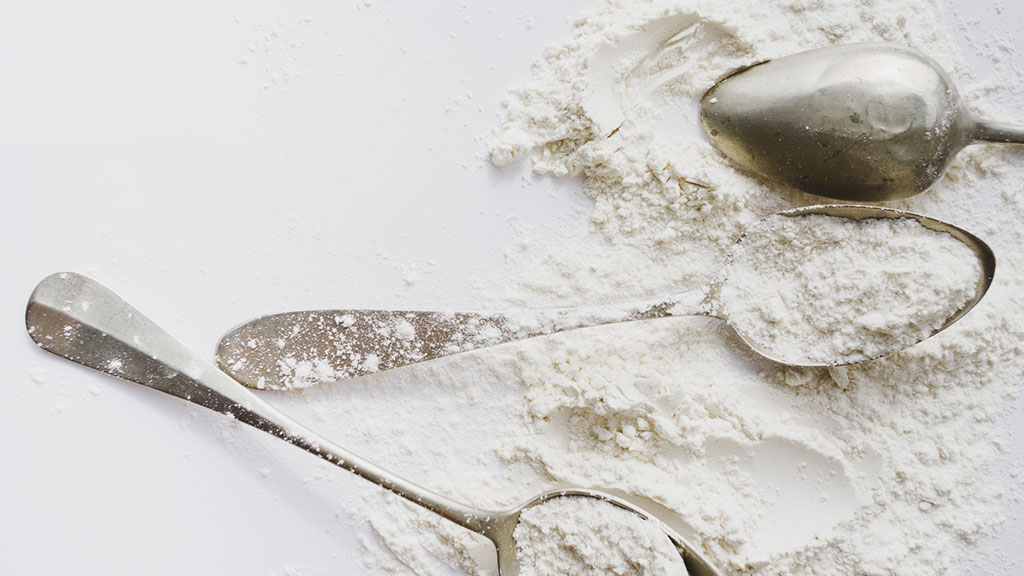Nourish
WHAT’S THE SCOOP ON PROTEIN POWDER?
To scoop or not to scoop? When it comes to protein powder, the answer isn’t a simple yes or no. We reached out to B3 in-house naturopathic physician Jen Curtiss to find out how much protein powder is too much and why steering clear of those shake mixes and powders might be the best thing for your body.
B3: Generally, do you think that adding protein powders to our diets is necessary?
JEN CURTISS: I think of protein powders as processed foods and don’t promote them, but I do think that adding real protein from food to our diets is necessary—just not protein powders.
B3: What’s your main concern with them?
JC: My concern is that they are processed, which reduces nutritional content, and that they are often contaminated, unbalanced, and not real food.
B3: Is it possible to eat enough protein without them?
JC: Eating real protein is easy. You can boost your smoothies with sesame seeds, ground flax seeds, chia seeds, hemp seeds, and/or nut butters. And you can add avocado for creamy texture. Another easy way to boost protein in the morning is to add a soft-boiled egg alongside your smoothie, for another 6 grams.
B3 tip: Make your morning smoothie with 2 tablespoons hemp hearts, 1 tablespoon peanut butter, and 8 ounces of plant milk and you’ll already be at nearly 14 grams!
B3: How much protein does an average active woman actually need?
JC: An active woman should aim to get 10 to 35 grams of protein into every meal, or 20% to 40% of their daily calories. The amount is individual based on activity levels, metabolism, body type, and individual biochemistry.
B3 Tip: For reference, a cup of full-fat Greek yogurt has about 20 grams of protein, 1 cup chopped chicken breast has over 40 grams, 1 cup of cooked quinoa has 8 grams, and 1/2 cup of black beans has about 8 grams.
B3: If someone feels like they aren’t hitting that recommended amount of protein, do you have any other tips?
JC: Sure. If a person wants to supplement with a protein powder on occasion, I recommend organic pea or hemp-seed protein powder. If you are purchasing a protein powder, it should be made with whole food, free from sweeteners and flavor enhancers, organic, and GMO-free.
NOTE: Jen also recommends looking at the Consumer Reports study detailing the health risks of protein drinks from heavy metal contamination—including arsenic, lead, cadmium, and mercury for more information on why she recommends opting for whole food over powders whenever possible.
To scoop or not to scoop? When it comes to protein powder, the answer isn’t a simple yes or no. We reached out to B3 in-house naturopathic physician Jen Curtiss to find out how much protein powder is too much and why steering clear of those shake mixes and powders might be the best thing for your body.
B3: Generally, do you think that adding protein powders to our diets is necessary?
JEN CURTISS: I think of protein powders as processed foods and don’t promote them, but I do think that adding real protein from food to our diets is necessary—just not protein powders.
B3: What’s your main concern with them?
JC: My concern is that they are processed, which reduces nutritional content, and that they are often contaminated, unbalanced, and not real food.
B3: Is it possible to eat enough protein without them?
JC: Eating real protein is easy. You can boost your smoothies with sesame seeds, ground flax seeds, chia seeds, hemp seeds, and/or nut butters. And you can add avocado for creamy texture. Another easy way to boost protein in the morning is to add a soft-boiled egg alongside your smoothie, for another 6 grams.
B3 tip: Make your morning smoothie with 2 tablespoons hemp hearts, 1 tablespoon peanut butter, and 8 ounces of plant milk and you’ll already be at nearly 14 grams!
B3: How much protein does an average active woman actually need?
JC: An active woman should aim to get 10 to 35 grams of protein into every meal, or 20% to 40% of their daily calories. The amount is individual based on activity levels, metabolism, body type, and individual biochemistry.
B3 Tip: For reference, a cup of full-fat Greek yogurt has about 20 grams of protein, 1 cup chopped chicken breast has over 40 grams, 1 cup of cooked quinoa has 8 grams, and 1/2 cup of black beans has about 8 grams.
B3: If someone feels like they aren’t hitting that recommended amount of protein, do you have any other tips?
JC: Sure. If a person wants to supplement with a protein powder on occasion, I recommend organic pea or hemp-seed protein powder. If you are purchasing a protein powder, it should be made with whole food, free from sweeteners and flavor enhancers, organic, and GMO-free.
NOTE: Jen also recommends looking at the Consumer Reports study detailing the health risks of protein drinks from heavy metal contamination—including arsenic, lead, cadmium, and mercury for more information on why she recommends opting for whole food over powders whenever possible.










0 people have left a comment. Join the conversation!
View Comments